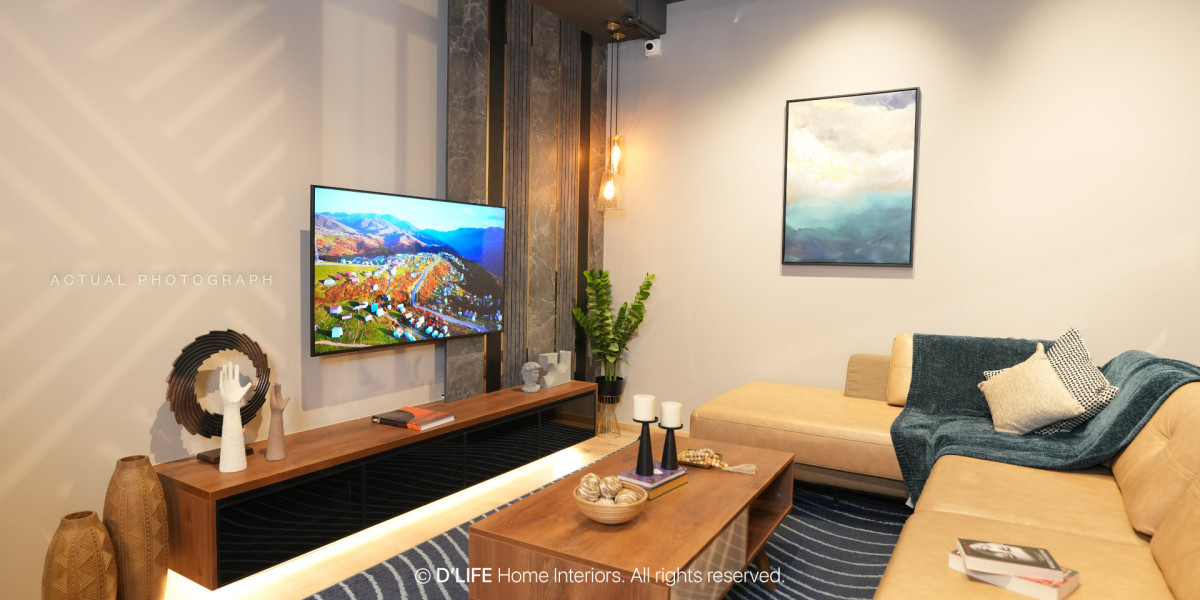The world of interior design is evolving faster than ever. From sustainable materials to smart home integration, the spaces we live and work in are becoming a reflection of our lifestyle, technology, and values. Whether you’re planning to remodel your home or build a new one, keeping up with the latest trends can help you make timeless design choices that stay stylish for years to come. For homeowners in South India, especially those seeking creative and personalized transformations, interior designers in Coimbatore are pioneering modern solutions that blend functionality with elegance — setting new benchmarks for homes that look stunning and feel effortlessly livable.
Let’s explore the six major decorating trends shaping the future of interior design and influencing how we create and experience spaces today.
1. Sustainable and Eco-Friendly Interiors
Sustainability is no longer a choice — it’s a necessity. As environmental awareness grows, more homeowners are prioritizing eco-friendly design solutions. From using reclaimed wood and recycled metals to choosing low-VOC paints and organic fabrics, sustainability is defining the new aesthetic of interior spaces.
Designers are moving away from mass-produced décor and embracing craftsmanship that values longevity and local artistry. Materials such as bamboo, jute, and cork are making a comeback due to their renewability and natural charm. In interior design, the focus is shifting toward creating spaces that don’t just look beautiful but also minimize their carbon footprint.
Moreover, energy-efficient lighting, solar integration, and natural ventilation systems are being incorporated to make homes more self-sufficient. These elements not only contribute to sustainability but also promote wellness and comfort — the ultimate goal of modern design.
2. Smart Homes and Technology Integration
The future of interior design is inseparable from technology. Smart homes are redefining convenience, allowing homeowners to control everything — from lighting and temperature to security and entertainment — through a smartphone or voice command.
But today’s technology integration goes beyond gadgets; it’s about seamless design. For instance, motion-sensor lighting, built-in wireless charging furniture, and hidden cables are now part of aesthetic planning. This ensures that technology enhances the space without compromising its beauty.
Interior designers are also experimenting with home automation that adapts to personal habits. Imagine curtains that open at sunrise, lighting that adjusts based on your mood, or air conditioning that cools only occupied rooms — that’s the sophistication modern interior design is achieving.
In cities like Coimbatore, where urban living meets comfort-driven lifestyle, many designers are integrating tech-smart features into traditional Indian homes, creating a perfect balance of innovation and culture.
3. Biophilic Design: Bringing Nature Indoors
After years of concrete and minimalistic interiors, people are craving a connection with nature. This desire has given rise to biophilic design — an approach that integrates natural elements into the built environment.
This trend focuses on using natural light, greenery, organic materials, and outdoor views to create spaces that promote relaxation and reduce stress. Indoor plants, living walls, water features, and earthy tones are popular tools used to achieve this effect.
Biophilic interior design is not just about decoration; it’s about improving health and well-being. Studies show that spaces rich in natural elements boost productivity, creativity, and mood — making them ideal for both homes and offices.
For homeowners who wish to explore nature-inspired design ideas in more depth, check out this detailed guide on nature-inspired interior design ideas, which highlights beautiful ways to bring the outdoors into your living space.
From terracotta textures to stone countertops and rattan furniture, this trend celebrates the raw beauty of nature. Many homeowners now prefer large windows, skylights, and balconies that invite the outdoors in — turning everyday living into a serene experience.
4. Minimalism with a Twist: “Warm Minimalism”
Minimalism has long been associated with clean lines and clutter-free spaces. But the new era of interior design is moving toward warm minimalism — a softer, more inviting version of the classic minimal aesthetic.
Instead of stark whites and cold greys, this trend embraces warm neutral tones, tactile materials, and cozy layering. Think beige walls paired with wooden accents, linen drapes, and textured rugs — creating a balance between simplicity and comfort.
Warm minimalism focuses on less but better. Every element in the room has a purpose, yet the space feels personal and lived-in. This style appeals to those who value serenity but don’t want their home to feel sterile.
With busy modern lifestyles, people seek spaces that promote calmness and emotional comfort. Designers are achieving this through mindful color palettes, natural lighting, and furniture that emphasizes craftsmanship over quantity.
5. Multifunctional and Adaptive Spaces
The pandemic redefined how we use our homes, and this transformation continues to influence interior design. Today’s homes need to be flexible — easily adapting from a workspace to a relaxation zone or a social area.
Multifunctional furniture, convertible layouts, and movable partitions are now integral to design planning. Home offices are being incorporated into bedrooms or living rooms with sleek, space-saving solutions. Foldable tables, hidden storage, and modular seating allow rooms to evolve throughout the day.
Urban apartments, in particular, benefit from this approach as it maximizes limited square footage without compromising aesthetics. Designers are also exploring creative zoning techniques — using lighting, rugs, or furniture arrangements to define areas without constructing walls.
This trend highlights a fundamental shift in interior design philosophy: flexibility and practicality are as important as visual appeal.
6. Heritage Meets Modern: The Rise of Cultural Fusion
As the world becomes more global, people are rediscovering their roots and expressing them through interior spaces. The fusion of traditional craftsmanship with modern functionality is one of the most captivating trends shaping the future of design.
In India, for instance, homeowners are blending regional art forms, handcrafted furniture, and vintage patterns with sleek, contemporary layouts. This blend not only preserves cultural identity but also adds warmth and personality to modern spaces.
A home in Coimbatore might combine Chettinad-inspired tiles with minimalist furniture, or a modern Chennai apartment might showcase traditional brass décor in a neutral-toned living room. This thoughtful merging of old and new is what makes interior design timeless.
By mixing eras, materials, and cultural references, designers are creating homes that tell a story — a reflection of personal history and modern aspiration.
Conclusion: Designing for the Future
As we look ahead, the future of interior design lies in harmony — between technology and nature, aesthetics and function, modernity and tradition. The trends shaping tomorrow’s homes aren’t just about beauty; they’re about sustainability, emotional well-being, and adaptability.
Whether it’s eco-conscious materials, smart automation, or design rooted in cultural pride, the spaces we inhabit are becoming more meaningful and mindful. For homeowners seeking expert guidance to navigate these evolving trends, professional expertise is invaluable. The best interior designers in India are at the forefront of this design revolution — merging creativity, technology, and sustainability to craft spaces that truly define the future of living.





